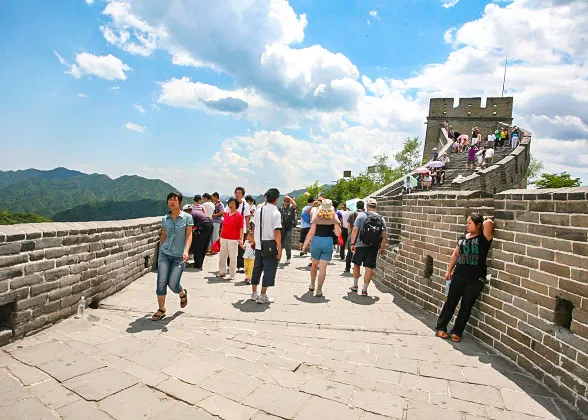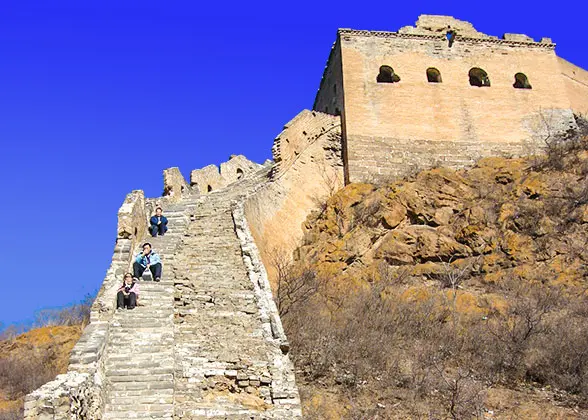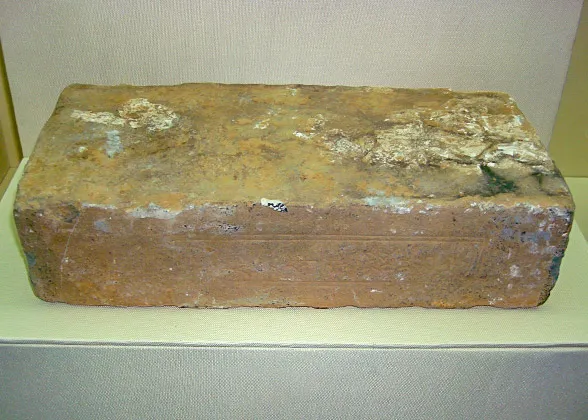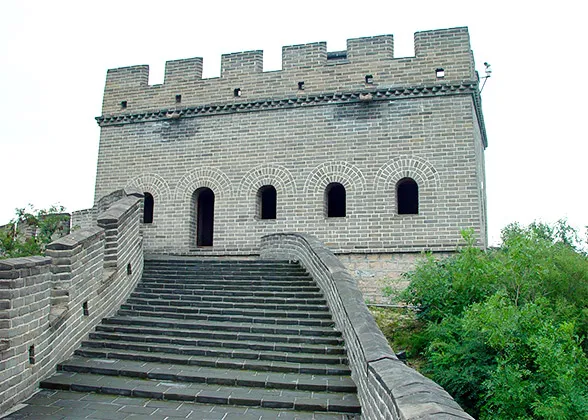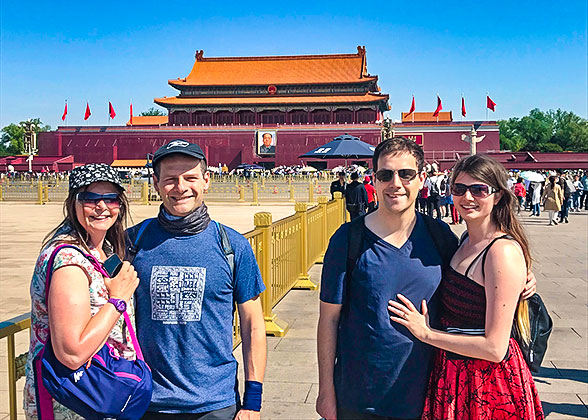30 Great Wall of China FAQs
![]() The Great Wall of China stretches across northern China, traversing 404 counties in 15 provinces, including Beijing, Tianjin, Hebei, Shanxi, Inner Mongolia, Liaoning, Jilin, Heilongjiang, Shandong, Henan, Shaanxi, Gansu, Qinghai, Ningxia, and Xinjiang.
The Great Wall of China stretches across northern China, traversing 404 counties in 15 provinces, including Beijing, Tianjin, Hebei, Shanxi, Inner Mongolia, Liaoning, Jilin, Heilongjiang, Shandong, Henan, Shaanxi, Gansu, Qinghai, Ningxia, and Xinjiang.
![]() The total length of the Great Wall across all dynasties recognized within China measures 21,196.18 kilometers (13,170.70 miles), of which the length of the Ming Great Wall we see today is 8,851.8 kilometers (5,500.3 miles). This figure was officially announced by the China’s National Cultural Heritage Administration in 2012 following a comprehensive six-year investigation and statistical analysis.
The total length of the Great Wall across all dynasties recognized within China measures 21,196.18 kilometers (13,170.70 miles), of which the length of the Ming Great Wall we see today is 8,851.8 kilometers (5,500.3 miles). This figure was officially announced by the China’s National Cultural Heritage Administration in 2012 following a comprehensive six-year investigation and statistical analysis.
Is the Great Wall just a wall?
![]() Precisely speaking, the Great Wall constitutes a comprehensive defense system rather than merely a single wall. Firstly, the Great Wall comprises multiple walls; in Shanxi Province alone, the Ming Great Wall has four distinct walls from the outermost to the innermost. Moreover, the Great Wall encompasses a defense and garrison system typified by border walls and fortresses, a military intelligence system consisting of beacon towers and post roads, and a logistics support system exemplified by military farms and markets. All these elements collectively form the complete Great Wall.
Precisely speaking, the Great Wall constitutes a comprehensive defense system rather than merely a single wall. Firstly, the Great Wall comprises multiple walls; in Shanxi Province alone, the Ming Great Wall has four distinct walls from the outermost to the innermost. Moreover, the Great Wall encompasses a defense and garrison system typified by border walls and fortresses, a military intelligence system consisting of beacon towers and post roads, and a logistics support system exemplified by military farms and markets. All these elements collectively form the complete Great Wall.
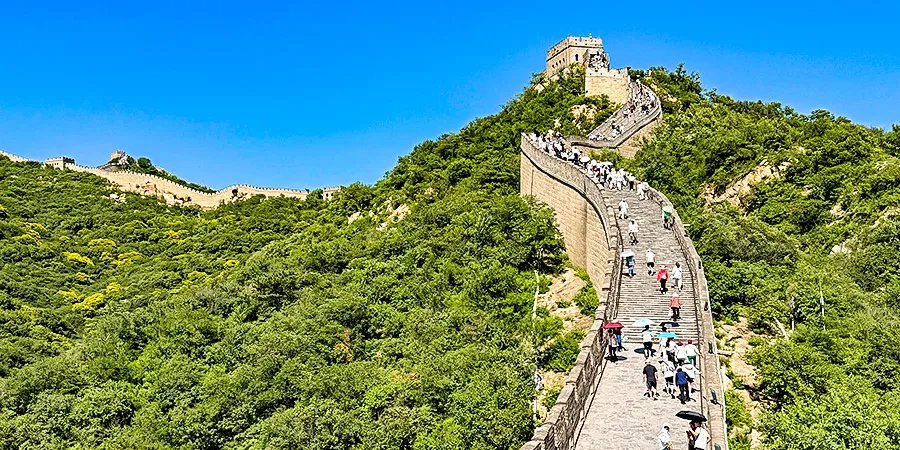 |
| The Great Wall of China |
![]() The height of the ramparts varies according to different terrains. Sections at relatively flat regions are higher than that at lofty mountains. The average height is 6 to 7 meters (20 to 23 feet), with the highest point at 14 meters (46 feet).
The height of the ramparts varies according to different terrains. Sections at relatively flat regions are higher than that at lofty mountains. The average height is 6 to 7 meters (20 to 23 feet), with the highest point at 14 meters (46 feet).
![]() The average width of the Great Wall of China is 4 to 5 meters (13 - 16 feet). Its widest part measures 16.7 meters (54.8 feet), while the narrowest part is a mere 0.7 meters (2.3 feet), allowing only one person to pass through.
The average width of the Great Wall of China is 4 to 5 meters (13 - 16 feet). Its widest part measures 16.7 meters (54.8 feet), while the narrowest part is a mere 0.7 meters (2.3 feet), allowing only one person to pass through.
![]() The most renowned and best-preserved sections of the Great Wall are predominantly located near Beijing. Most visitors opt for Mutianyu due to its majestic architecture, breathtaking scenery, and relatively smaller crowds. For hiking enthusiasts, sections like Jinshanling and Simatai offer unparalleled opportunities to experience the wall's grandeur and desolate beauty.
The most renowned and best-preserved sections of the Great Wall are predominantly located near Beijing. Most visitors opt for Mutianyu due to its majestic architecture, breathtaking scenery, and relatively smaller crowds. For hiking enthusiasts, sections like Jinshanling and Simatai offer unparalleled opportunities to experience the wall's grandeur and desolate beauty.
|
|
![]() The Badaling Great Wall is the most renowned and magnificent section in China, yet it often attracts a large number of tourists. The Mutianyu Great Wall is well-preserved, offers stunning scenery, and has relatively fewer visitors. Thus, Mutianyu is more highly recommended.
The Badaling Great Wall is the most renowned and magnificent section in China, yet it often attracts a large number of tourists. The Mutianyu Great Wall is well-preserved, offers stunning scenery, and has relatively fewer visitors. Thus, Mutianyu is more highly recommended.
![]() Spring (April to May) and autumn (September to October) are the most comfortable seasons to visit this great wonder. The temperature is neither hot nor cold, and the scenery is quite joyful. In spring, the wall would be surrounded with lush green plants. In autumn, the tree leaves always turn red, and the wall would look like a dragon swimming in a sea of fire. But, make sure to avoid the public holidays, especially the May Day (May 1 - 5) and the National Day Holiday (Oct. 1 - Oct. 7).
Spring (April to May) and autumn (September to October) are the most comfortable seasons to visit this great wonder. The temperature is neither hot nor cold, and the scenery is quite joyful. In spring, the wall would be surrounded with lush green plants. In autumn, the tree leaves always turn red, and the wall would look like a dragon swimming in a sea of fire. But, make sure to avoid the public holidays, especially the May Day (May 1 - 5) and the National Day Holiday (Oct. 1 - Oct. 7).
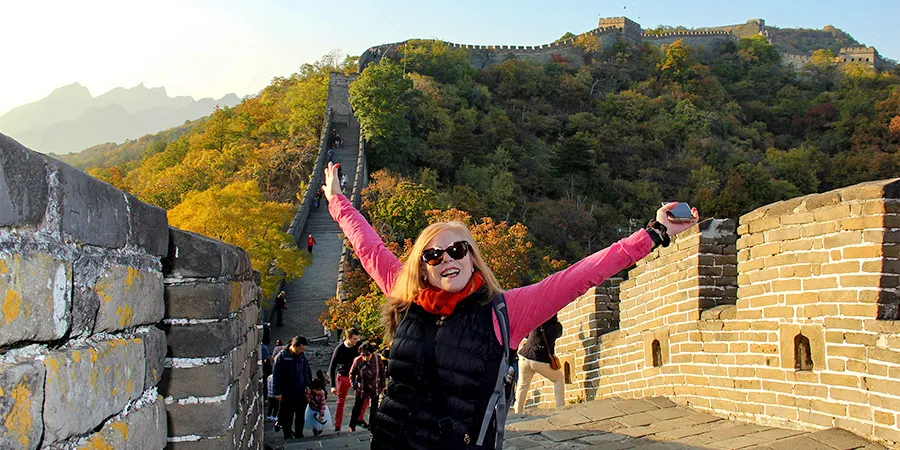 |
| Mutianyu Great Wall in autumn |
 |
| Soldiers guarding the Great Wall |
![]() The construction was ordered by rulers of more than 20 dynasties. The construction of the Great Wall was accomplished through the joint efforts of both military personnel and civilians. The “military” mainly referred to the soldiers stationed around the Great Wall, while the “civilians” were mainly conscripted or hired laborers. During the Ming Dynasty (1368 - 1644), the construction teams included masons, stonemasons, bricklayers, carpenters, etc. Above them, there were supervisors, foremen, inspectors, and other personnel responsible for hierarchical management.
The construction was ordered by rulers of more than 20 dynasties. The construction of the Great Wall was accomplished through the joint efforts of both military personnel and civilians. The “military” mainly referred to the soldiers stationed around the Great Wall, while the “civilians” were mainly conscripted or hired laborers. During the Ming Dynasty (1368 - 1644), the construction teams included masons, stonemasons, bricklayers, carpenters, etc. Above them, there were supervisors, foremen, inspectors, and other personnel responsible for hierarchical management.
![]() The construction work lasted on and off for over 2,500 years, from the Spring and Autumn Period (770 BC - 476 BC) to the Qing Dynasty (1644 - 1911).
The construction work lasted on and off for over 2,500 years, from the Spring and Autumn Period (770 BC - 476 BC) to the Qing Dynasty (1644 - 1911).
More to see:
How old is the Great Wall of China?
Great Wall History
![]() The earliest sections were built in the Spring and Autumn Period by different kingdoms to defend against attacks of other states. After Emperor Qin Shi Huang unified the whole nation, he had the separate sections connected, and since then, the wall served as the defensive line on the northern border, resisting the intrusion of northern nomads.
The earliest sections were built in the Spring and Autumn Period by different kingdoms to defend against attacks of other states. After Emperor Qin Shi Huang unified the whole nation, he had the separate sections connected, and since then, the wall served as the defensive line on the northern border, resisting the intrusion of northern nomads.
![]() In early times, materials varied in different regions. For example, constructers often used stones in mountainous areas, earth in plains, sand and weeds in deserts. In the Ming Dynasty, brick-making skills became matured and sections built of bricks became common. Besides these main materials, auxiliary substances such as rice paste and lime as adhesives, and grass mud plaster for surface treatment of the walls were also employed.
In early times, materials varied in different regions. For example, constructers often used stones in mountainous areas, earth in plains, sand and weeds in deserts. In the Ming Dynasty, brick-making skills became matured and sections built of bricks became common. Besides these main materials, auxiliary substances such as rice paste and lime as adhesives, and grass mud plaster for surface treatment of the walls were also employed.
|
|
See: The construction of the Great Wall
How many bricks were used to build the wall?
![]() Some scholars have estimated the brick consumption of the brick-clad sections of the Ming Dynasty Great Wall. Their conclusion indicates that for every 1 meter (3.3 feet) of the brick-clad Great Wall, approximately 6,000 bricks are required. When considering individual structures like watchtowers and beacon towers, around 9,000 bricks are needed per meter.
Some scholars have estimated the brick consumption of the brick-clad sections of the Ming Dynasty Great Wall. Their conclusion indicates that for every 1 meter (3.3 feet) of the brick-clad Great Wall, approximately 6,000 bricks are required. When considering individual structures like watchtowers and beacon towers, around 9,000 bricks are needed per meter.
What were the towers on the Great Wall used for?
![]() Tower buildings on the Great Wall are classified into two types: watchtowers and beacon towers. Watchtowers, equipped with battlements and windows, were used for surveillance, as living quarters for soldiers, and for storing weapons and provisions. Beacon towers, on the other hand, functioned as the earliest alarm system, and used to emit smoke signals for conveying military information.
Tower buildings on the Great Wall are classified into two types: watchtowers and beacon towers. Watchtowers, equipped with battlements and windows, were used for surveillance, as living quarters for soldiers, and for storing weapons and provisions. Beacon towers, on the other hand, functioned as the earliest alarm system, and used to emit smoke signals for conveying military information.
|
|
Why is the smoke used to signal with beacon fires called “wolf smoke”?
![]() Is it because it was made from burning wolf dung? No, it isn't. Ancient documents detailing beacon-fire regulations never mentioned wolf dung as a material, and archaeological excavations near beacon tower sites have yet to uncover any wolf dung. In fact, the term “wolf smoke” first emerged in poetry. Thus, the character “wolf” is more likely a rhetorical device rather than a reference to the actual use of wolf dung for burning.
Is it because it was made from burning wolf dung? No, it isn't. Ancient documents detailing beacon-fire regulations never mentioned wolf dung as a material, and archaeological excavations near beacon tower sites have yet to uncover any wolf dung. In fact, the term “wolf smoke” first emerged in poetry. Thus, the character “wolf” is more likely a rhetorical device rather than a reference to the actual use of wolf dung for burning.
![]() The best-known sections, like Badaling and Mutianyu, are located in the outskirts of Beijing. You can get there by public transport, private cars or tours in 1 - 2 hours.
The best-known sections, like Badaling and Mutianyu, are located in the outskirts of Beijing. You can get there by public transport, private cars or tours in 1 - 2 hours.
See:
How to Get to Badaling from Downtown Beijing
How to reach Mutianyu from Downtown Beijing
How to Get to the Great Wall of China from Beijing’s Airports?
How to Get to the Great Wall from Hong Kong
How to Travel From Shanghai to Great Wall of China?
How many people built the Great Wall?
![]() The construction work was implemented intermittently by several states, involving countless labors. The total number cannot be found in any historical material, but the recorded labors only in the Qin Dynasty (221 - 207 BC) nearly reached one million, accounting for about one twentieth of the total population at that time.
The construction work was implemented intermittently by several states, involving countless labors. The total number cannot be found in any historical material, but the recorded labors only in the Qin Dynasty (221 - 207 BC) nearly reached one million, accounting for about one twentieth of the total population at that time.
How many people died during the construction?
![]() There is no accurate number in the historical materials, but approximately 10% of the workforce mobilized during the Qin Dynasty's Great Wall construction perished - an estimated 100,000 casualties. Extrapolating this mortality rate across successive dynasties suggests total construction deaths may have exceeded one million lives. The construction was extremely arduous, with most sections built along steep ridges. Laborers had to carry heavy bricks, and many died due to the excessive workload, fell from the mountains, or starved to death due to insufficient food.
There is no accurate number in the historical materials, but approximately 10% of the workforce mobilized during the Qin Dynasty's Great Wall construction perished - an estimated 100,000 casualties. Extrapolating this mortality rate across successive dynasties suggests total construction deaths may have exceeded one million lives. The construction was extremely arduous, with most sections built along steep ridges. Laborers had to carry heavy bricks, and many died due to the excessive workload, fell from the mountains, or starved to death due to insufficient food.
![]() There is no record of the total cost of the Great Wall of all dynasties. However, the cost of the Ming Great Wall can be estimated. The construction of one meter of the Ming Great Wall requires approximately 6,000 gray bricks and 7 cubic meters of lime mortar. Based on current market prices, each gray brick costs about CNY 4, while lime mortar is priced at CNY 400 per cubic meter. Consequently, the material cost alone for building one meter reaches approximately CNY 27,000. When factoring in labor, management, and other associated expenses, the total construction cost per meter amounts to roughly CNY 60,000. Extrapolating these figures, the material expenditure for the entire Ming Great Wall would exceed CNY 530 billion.
There is no record of the total cost of the Great Wall of all dynasties. However, the cost of the Ming Great Wall can be estimated. The construction of one meter of the Ming Great Wall requires approximately 6,000 gray bricks and 7 cubic meters of lime mortar. Based on current market prices, each gray brick costs about CNY 4, while lime mortar is priced at CNY 400 per cubic meter. Consequently, the material cost alone for building one meter reaches approximately CNY 27,000. When factoring in labor, management, and other associated expenses, the total construction cost per meter amounts to roughly CNY 60,000. Extrapolating these figures, the material expenditure for the entire Ming Great Wall would exceed CNY 530 billion.
Furthermore, the Great Wall features numerous watchtowers along its length and strategically vital mountain passes throughout its route. The construction of these defensive structures undoubtedly required substantial additional investment. Comprehensive calculations suggest the total construction cost of the Ming Great Wall would surpass CNY 550 billion.
![]() The claim that “The Great Wall is the only man-made structure visible to the naked eye from the moon” is perhaps the most widespread myth about the Great Wall. In reality, this statement first appeared in a letter written by British archaeologist William Stukeley in 1754 - 215 years before humans first landed on the moon. Not only is it invisible from the moon, but even from low Earth orbit, where most satellites and space stations are located, the Great Wall may not be discernible. Yang Liwei, China's first astronaut who traveled into space aboard the Shenzhou V spacecraft in 2003, clearly stated that he did not see the Great Wall from space. After all, despite its great length, the width of the Great Wall is even narrower than that of a two-lane road.
The claim that “The Great Wall is the only man-made structure visible to the naked eye from the moon” is perhaps the most widespread myth about the Great Wall. In reality, this statement first appeared in a letter written by British archaeologist William Stukeley in 1754 - 215 years before humans first landed on the moon. Not only is it invisible from the moon, but even from low Earth orbit, where most satellites and space stations are located, the Great Wall may not be discernible. Yang Liwei, China's first astronaut who traveled into space aboard the Shenzhou V spacecraft in 2003, clearly stated that he did not see the Great Wall from space. After all, despite its great length, the width of the Great Wall is even narrower than that of a two-lane road.
How long does it take to hike all the way across the Great Wall?
![]() Typically, tourists spend 1 to 2 days hiking a specific section of the Great Wall. Completing the entire hike of the Great Wall would take approximately two years.
Typically, tourists spend 1 to 2 days hiking a specific section of the Great Wall. Completing the entire hike of the Great Wall would take approximately two years.
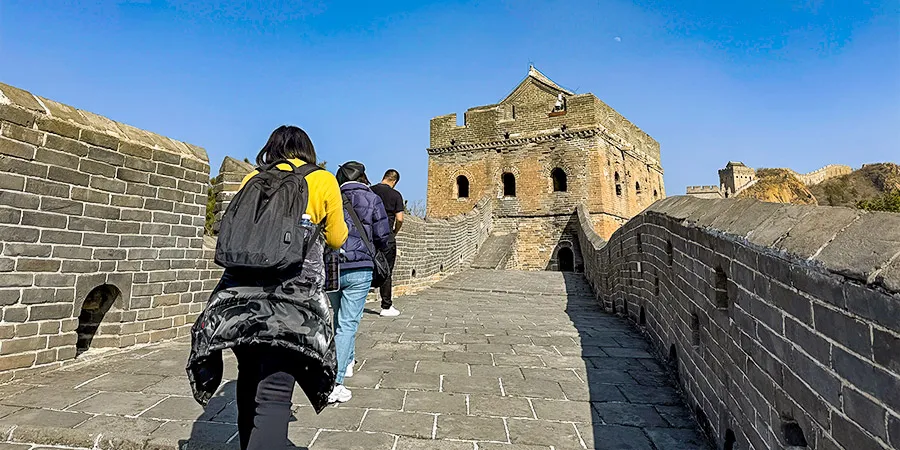 |
| Hiking on the Great Wall of China |
You may like: Best Great Wall Hike: Top 5 Wild Hiking Routes
Does the Great Wall cross rivers?
![]() Yes. When the Great Wall meets rivers, water gates are often constructed on the wall. This design ensures the continuity of the Great Wall while allowing the rivers to flow unobstructed.
Yes. When the Great Wall meets rivers, water gates are often constructed on the wall. This design ensures the continuity of the Great Wall while allowing the rivers to flow unobstructed.
Do the Great Wall and the Silk Road overlap?
![]() During the Han Dynasty (202 BC - 220 AD), diplomatic missions to the Western Regions generally traveled along the inner side of the Qin and Han Great Wall. As a result, in the Hexi Corridor and present-day Xinjiang region, there are numerous overlapping sections between the Silk Road and the Great Wall.
During the Han Dynasty (202 BC - 220 AD), diplomatic missions to the Western Regions generally traveled along the inner side of the Qin and Han Great Wall. As a result, in the Hexi Corridor and present-day Xinjiang region, there are numerous overlapping sections between the Silk Road and the Great Wall.
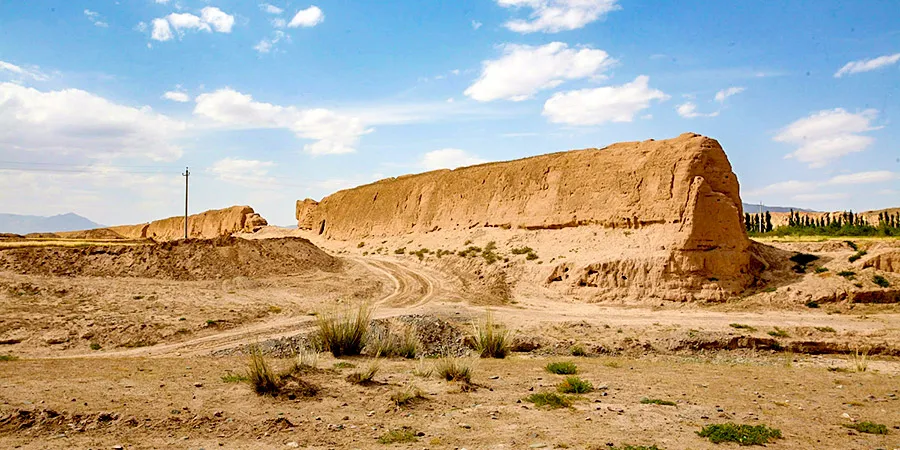 |
| The Great Wall along the Silk Road |
More to see: Relation Between Great Wall & Silk Road
What weapons were mainly used by the ancient Great Wall garrisons?
![]() Prior to the Ming Dynasty, the garrisons primarily used cold weapons, such as long spears and crossbows. However, during the Ming Dynasty, firearms came into widespread use. In Jixian County, which was closest to the capital, the proportion of firearms in the garrison's arsenal even exceeded 50%. During city defenses, they also made use of some “unconventional weapons,” such as boiling excrement.
Prior to the Ming Dynasty, the garrisons primarily used cold weapons, such as long spears and crossbows. However, during the Ming Dynasty, firearms came into widespread use. In Jixian County, which was closest to the capital, the proportion of firearms in the garrison's arsenal even exceeded 50%. During city defenses, they also made use of some “unconventional weapons,” such as boiling excrement.
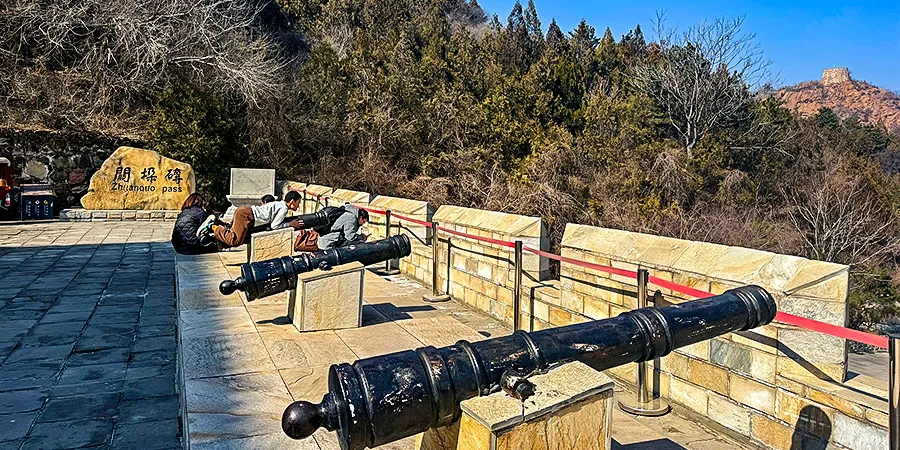 |
| Weapons on the Great Wall |
More to see: Military Defense System of China Great Wall
Which province has the most Great Wall?
![]() Surprisingly, Inner Mongolia holds the largest amount of the Great Wall in China. It possesses nearly one-third of the Great Wall of China, with a significant portion being a less-known type of Great Wall - the Jin Frontier Trenches. Unlike the sections of previous dynasties, which were built on high and perilous mountains using earth, stones, and bricks to form tall walls, the Jin Frontier Trenches mainly consisted of trenches dug and earthen walls built on flat ground. Hence, it is regarded as the most unique form of the Great Wall.
Surprisingly, Inner Mongolia holds the largest amount of the Great Wall in China. It possesses nearly one-third of the Great Wall of China, with a significant portion being a less-known type of Great Wall - the Jin Frontier Trenches. Unlike the sections of previous dynasties, which were built on high and perilous mountains using earth, stones, and bricks to form tall walls, the Jin Frontier Trenches mainly consisted of trenches dug and earthen walls built on flat ground. Hence, it is regarded as the most unique form of the Great Wall.
What is the “wild Great Wall”?
![]() The “wild” is generally reflected in two aspects: one is that their preservation condition is relatively dilapidated, and the other is that they have not been developed into scenic spots and opened to the public. In fact, the Great Wall that has been preserved intact and turned into scenic spots only accounts for a very small portion. Therefore, it can be said that the vast majority of the Great Wall is wild Great Wall.
The “wild” is generally reflected in two aspects: one is that their preservation condition is relatively dilapidated, and the other is that they have not been developed into scenic spots and opened to the public. In fact, the Great Wall that has been preserved intact and turned into scenic spots only accounts for a very small portion. Therefore, it can be said that the vast majority of the Great Wall is wild Great Wall.
How can they prevent enemies from directly bypassing the end of the Great Wall?
![]() Indeed, the Great Wall has endpoints. To prevent enemies from bypassing these points, the Great Wall often terminates at natural barriers like steep mountains or fast-flowing rivers. Sometimes, castles or forts are constructed at these locations to strengthen the defense.
Indeed, the Great Wall has endpoints. To prevent enemies from bypassing these points, the Great Wall often terminates at natural barriers like steep mountains or fast-flowing rivers. Sometimes, castles or forts are constructed at these locations to strengthen the defense.
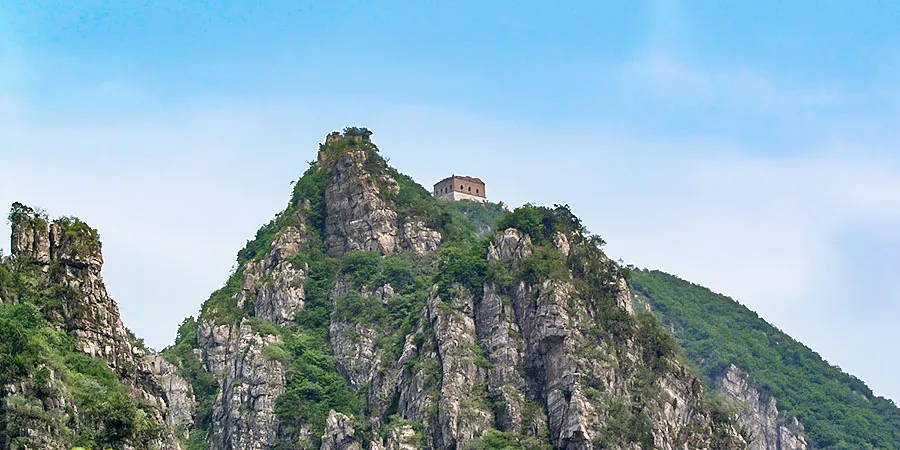 |
| The Great Wall in the Dangerous Mountains |
What is the current preservation status of the Great Wall?
![]() The current situation is far from ideal. Among the known 21,000 kilometers (13,000 miles) of the Great Wall, only about 2,000 kilometers (1,200 miles) can be considered “well-preserved,” while approximately 6,500 kilometers (4,000 miles) have completely disappeared.
The current situation is far from ideal. Among the known 21,000 kilometers (13,000 miles) of the Great Wall, only about 2,000 kilometers (1,200 miles) can be considered “well-preserved,” while approximately 6,500 kilometers (4,000 miles) have completely disappeared.
More to see:
Current Situation of Great Wall
Great Wall Protection
![]() The Great Wall is the most popular sight of China, receiving tens of millions of visitors annually, including many world leaders. Only the section of Badaling has accepted more than 540 leaders in total, including President Nixon, President Ronald Reagan, President George Walker Bush, President Obama, Queen Elizabeth II, President Yeltsin, President Putin, and President Mandela.
The Great Wall is the most popular sight of China, receiving tens of millions of visitors annually, including many world leaders. Only the section of Badaling has accepted more than 540 leaders in total, including President Nixon, President Ronald Reagan, President George Walker Bush, President Obama, Queen Elizabeth II, President Yeltsin, President Putin, and President Mandela.
Do other countries have the Great Wall?
![]() Throughout world history, many civilizations have independently built walls. For instance, Hadrian's Wall in the UK, which was built by the Roman Empire, and the Gorgan Wall in Iran, constructed by the Sassanid Empire.
Throughout world history, many civilizations have independently built walls. For instance, Hadrian's Wall in the UK, which was built by the Roman Empire, and the Gorgan Wall in Iran, constructed by the Sassanid Empire.
